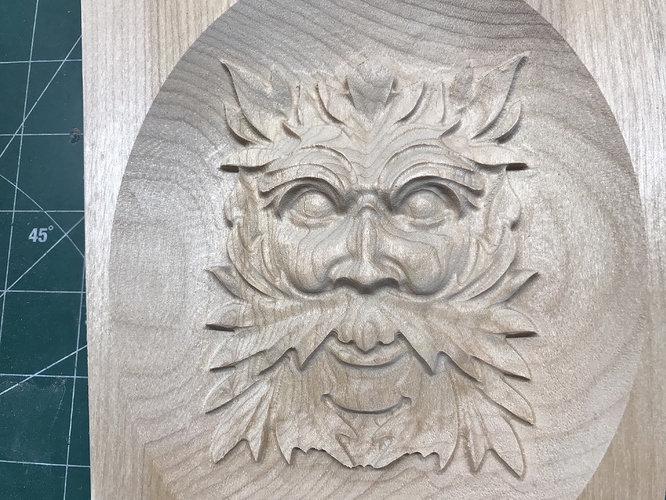I don’t know what kind of router bit/ndmill you are using, but a compression or down cut type could help.
The suggestion to use higher quality MDF can help a lot too.
I have also read about creating your own Renshape-like material in a discussion (cut and pasted for your enjoyment):
Renshape alternative
Jallit,
Maybe I can make your day.
I have been looking and
My experimenting took me down all paths, MDF, to Fiberglass resins (epoxy, polyester or vinylester) waxes and different timbres.
To cut a long story short, because all up I tried over 500 different recipes over a few months and I finally came up with something that machines very well and is easy to make.
I take measurements by volume (but when adding hardener you need to know your resin weight, so take care to take note).
Mix:
1 cup of corn flour, or corn starch
1 cup of resin
*Use a polyester resin, mix and stir slowly so as to not cause too many extra air bubbles (not important as you will see in a few minutes).
Their is a reaction that takes place between the polyester and the corn flour. It degasses itself!!!
Degass: Let sit for so 20 minutes
AMAZING! Maybe an industrial chemist could tell us why.
Add hardener but do not stir too much. We don’t want those bubbles coming back.
In 10 minutes your block is set, in an hour you can machine with it.
Now because we use fifty percent volume (actually about 10 percent of the finished block (you will see what I mean) the plastic is less fragile and less prone to break outs. It is fairly soft on the tools and no louder than wood to machine.
I pay about 10 soles ($4) for a litre of resin and 2 soles for the same volume of corn flour. That makes my 20 x 300 x 300 blocks cost about $5.
I am now machining this material with some great results. The detail I can obtain is amazing. Obviously this is not renshape, but it is just as good for my use. I’m sure you guys will love it.

 ).
).